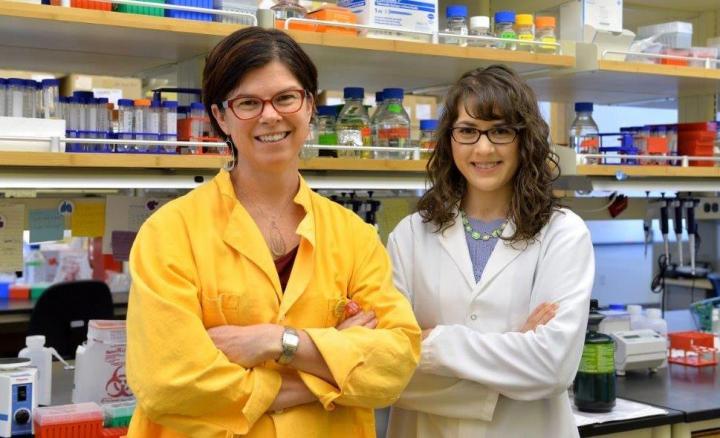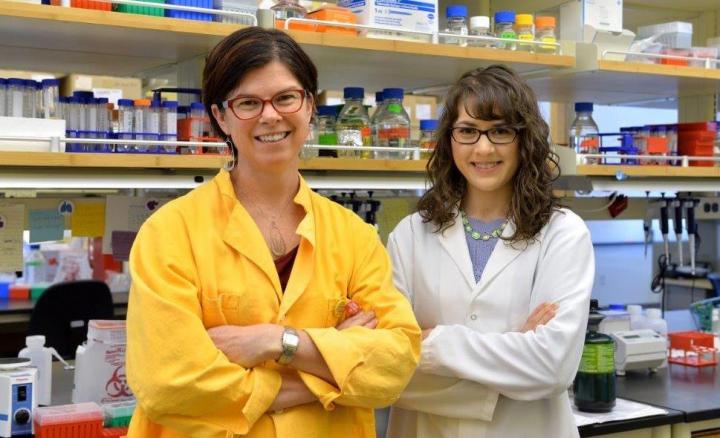
Credit: Shelly Hanks, WSU Photo Services
A study has found that a syringe-like device used to invade intestinal cells also acts as a traffic cop — directing bacteria where to go and thereby enabling them to efficiently carry out infection.
The findings by researchers at Washington State University and Harvard University appear in the Proceedings of the National Academy of Sciences. (Go to: http://www.pnas.org/content/113/17/4794.long)
The discovery is significant in that it reveals a mechanism that is critical to a pathogen's success and increases the possibility that scientists can one day thwart the ability of intestinal germs to cause gastrointestinal disease.
Among these germs, which sicken an estimated 2-billion people each year with severe diarrhea, are salmonella, shigella and E. coli. Increasing numbers of strains have become resistant to antibiotics, making their diseases more challenging to treat.
These bacteria often take up residence inside cells lining the intestine, but they employ different methods of doing so.
"Until now, it wasn't known how these pathogens decide to remain trapped inside a chamber-like vacuole or to move freely in the cellular fluid," said microbiologist Leigh Knodler of WSU's Paul G. Allen School for Global Animal Health, who co-led the study with Cammie Lesser of Harvard. "Clearly, it wasn't a random process. Even so, when we discovered the mechanism that calls the shots, it was a surprise."
That mechanism is a miniscule protein tip of a needle-like structure docked on the bacterial surface. Coined the "type III secretion system" in 1993, the device injects bacterial proteins through a tiny hole made in the intestinal cell membrane, tricking the host cell to engulf the bacteria.
But the researchers uncovered something more — that the business end of the syringe device serves a critical role in directing bacterial traffic, thus controlling whether the bacteria become "chronic dwellers" inside the membrane-bound vacuole or break out into the cell fluid. Their destiny determines whether the bacteria go on to kill the host cell, are excreted from the body or travel through the bloodstream to other sites.
Remarkably, researchers pinpointed the protein tip as a type of traffic warden after they replaced it with a protein tip from salmonella's cousin, shigella, another highly contagious bacterium that causes severe diarrhea.
"By removing the tip and replacing it with one from shigella, the salmonella didn't dwell inside the vacuoles. They moved out to the host cell contents, like shigella does," said Knodler.
Meaning that, the traffic cop had issued a new order — to leave town.
It's possible that this new-found knowledge could be used to develop novel approaches to prevent salmonella and other infections triggered by the type III secretion system, including black plague and certain pneumonia types, said Knodler.
###
Media Contact
Leigh Knodler
[email protected]
509-335-4046
@WSUNews
The post Bacteria use traffic-cop-like mechanism to infect gut appeared first on Scienmag.





